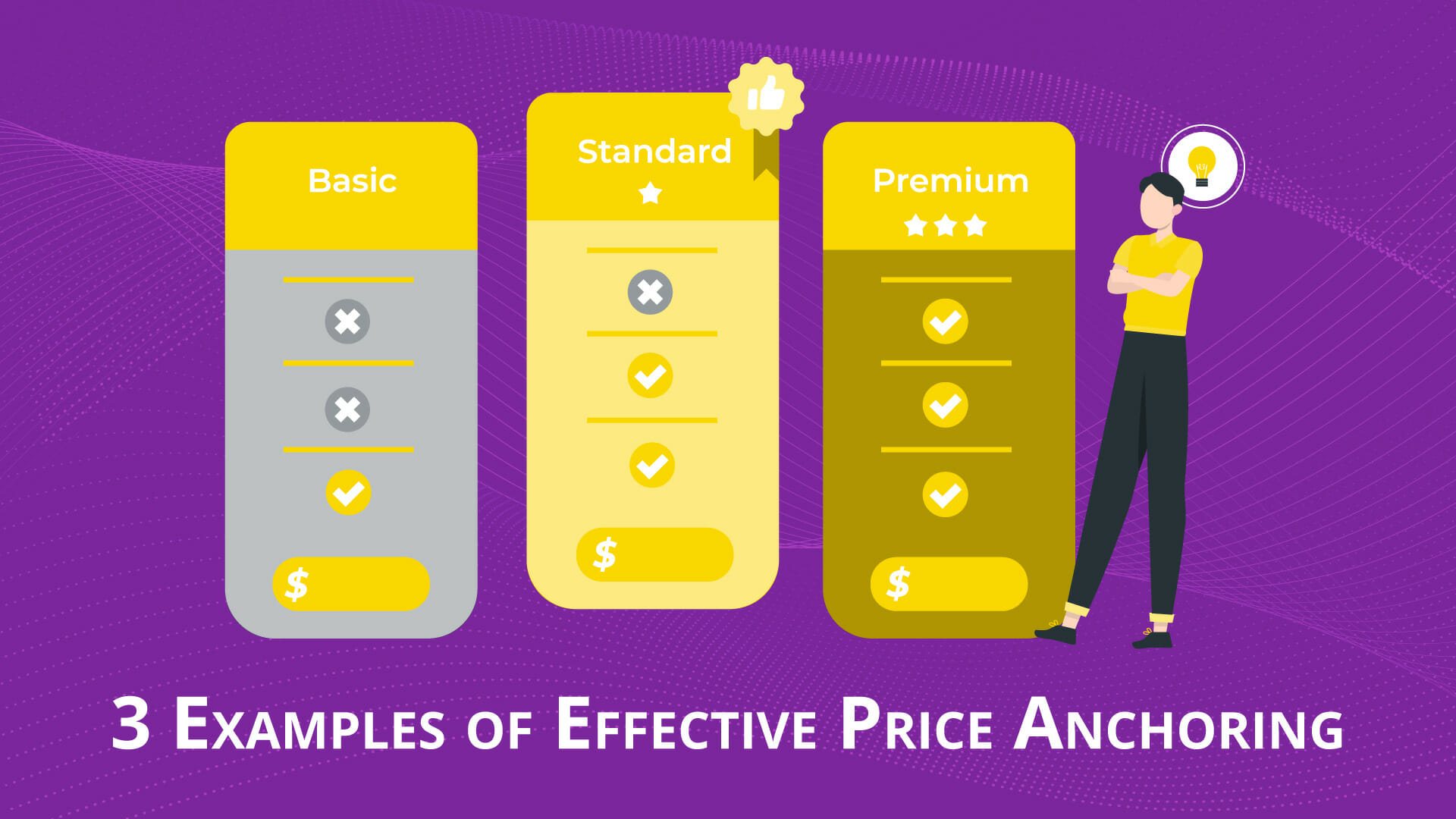
We humans make decisions by comparing things against each other. Especially when we’re dealing with products and services we know nothing about, we need to compare them to something we know.
That’s why we spend so much time comparing prices between similar solutions: it’s the only way to know if we could get a better deal for the same product, or even if we’re being ripped off.
This ingrained need for comparison creates an ideal environment for an anchoring bias – also known as the importance we tend to give to an initial piece of information. Essentially, we “anchor” our decisions to an initial subject or price point, and adjust our subsequent decisions from there.
Here’s a quick example.
You’re closing a project with someone. They shoot their quote: $2500. That’s their anchor. If you’re looking for a bargain, you’ll try to negotiate a price lower than that.
Now, if their anchor was $3500 and that didn’t fit in your budget, $2500 would have looked like a massive bargain. That was the price they were aiming for all along – all they did was anchor you at a higher price.
When used ethically, anchoring can help you convert more leads and make more sales. Here are 3 examples of effective price anchoring you can implement immediately.
Compare Previous Pricing to Current Discount
Helping potential customers understand that they’re getting a bargain is just the beginning. Besides, it involves more than just pricing.
Take a look at the following offer from The New Yorker’s pricing page:
(Source)
Notice the first price point: $119.99. That’s their anchor. Subscribers can now get the same unlimited annual access and save $60 for a whole year.
Great discount. But did they leave it at that? Of course not.
The new pricing is followed by clarifying copy, stating exactly what a potential subscriber will get as soon as they select this plan. Remember: pricing doesn’t sell on its own. Without copy that makes your value obvious to prospects, not even a dollar sounds worth it.
Anchor Your Solution Against Larger Costs
While cost is often associated with money, it can also mean the time you need to give up by saying “yes” to an offer. From now on, we’d like you to think about offers not only as pricing, but also as time costs.
Here’s an example from LegalVision, a commercial law firm.
(Source)
Notice how they didn’t only compare their weekly $165 rate to the $600 consultation of traditional law firms. They’ve also included the fact that you’ll be paying that much money for a single hour of conversation with a lawyer.
What if your problem requires more than that? Then that’s an extra $600, and good luck with that. You’ll be giving up nearly a thousand dollars for an hour, and you may not walk out with everything you need.
That’s the first piece of pricing information they put on the page, so visitors can see their unlimited business legal services as the best possible solution – both cost and time-wise. If you need legal services, you’ll be covered anytime for as many hours as you need.
Of course, anchoring your offer against those larger costs requires competitor research. What do your indirect and direct competitors charge for services like the one you offer? How much time do prospects need to give up? And how can you position yourself as the solution that values both your prospects’ money and time investments?
The anchoring technique they used also “de-optimised” the anchor by crossing it off. Which leads us into the next example…
De-Optimise Least Favourable Pricing
Let’s say you offer two subscription options: one monthly and one yearly.
Your goal is to drive potential customers to the yearly plan, because you know closing a monthly plan means you’ll have to “make the sale” every month.
Think about it: every time a subscription renews, subscribers have yet another chance to wonder if they really need it. This is especially true when money is tight, and seeing that “payment approved” notification ping might give them the brilliant idea of holding off on your solution for now. This could mean less sales to you, and less value to them.
Take a look at the following example from Copyhackers, which prioritises an annual subscription over a monthly one.
(Source)
The anchor is the annual pass – bright and beautiful, offering instant savings. The call-to-action button is bright orange and optimised for clicks, looking more like a call-to-value.
As for the monthly pass, it’s just sad. It’s grey and dull. It looks unappealing.
That’s on purpose! The same valuable information is present on both sides– it’s just been de-optimised in the monthly pass offer.
If you’d like prospects to choose one option over another, give this de-optimisation technique a try. It acts as a friendly reminder that they should go for the option that brings the most value in the long term.
Wrapping Up
Notice how the above examples don’t omit anything about their offers, nor do they compare their bargain prices to exorbitant costs. That could raise red flags in the minds of prospects, and if you’re not careful, it could even make your strategy look deceitful.With that in mind, anchoring strategies aren’t meant to trick your prospects into thinking they’re getting a bargain. It’s quite the contrary: they’re meant to help people understand that, when compared to the value it offers, your solution is almost a steal.
